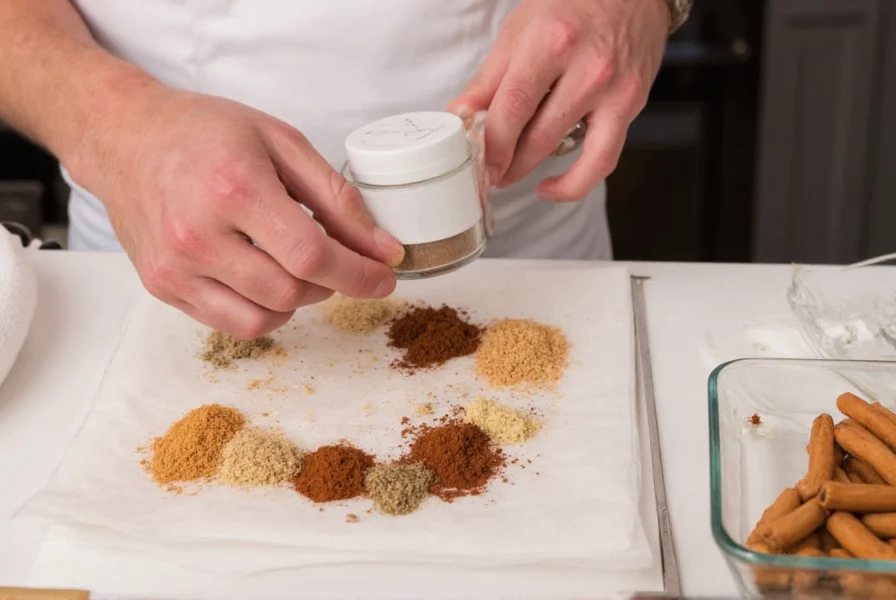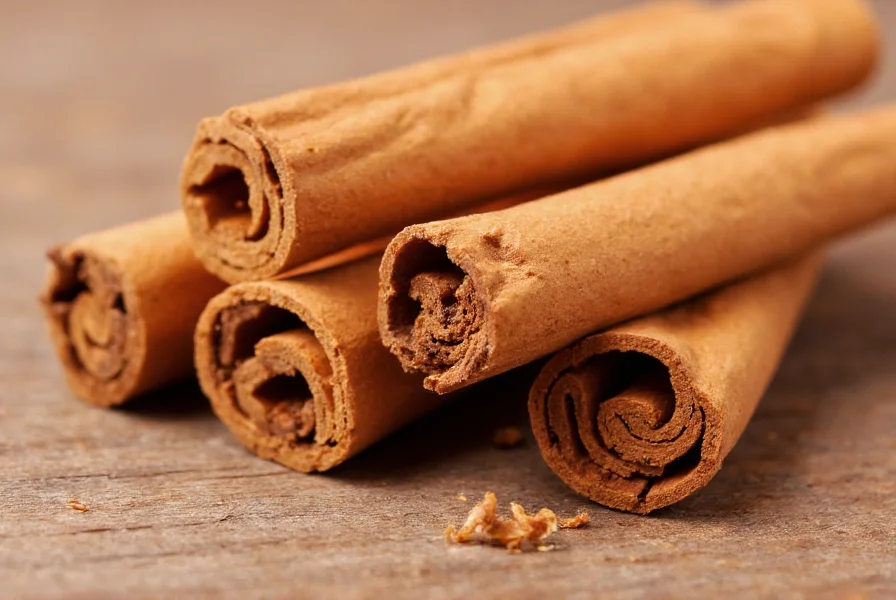Cinnamon's unique sensory profile often causes confusion in culinary discussions. Unlike capsaicin-containing spices that trigger actual pain receptors, cinnamon activates thermoreceptors through cinnamaldehyde, creating a distinct warming sensation. This scientific distinction matters for home cooks and professional chefs alike when balancing flavors in recipes.
The Science Behind Cinnamon's Warming Sensation
When you consume cinnamon, the primary compound responsible for its characteristic flavor and sensation is cinnamaldehyde, which makes up 60-90% of cinnamon's essential oil. This compound interacts with TRPA1 receptors—part of your body's thermosensory system—triggering what scientists call a “chemesthetic” response. This is fundamentally different from the capsaicin response created by chili peppers, which activates TRPV1 receptors.
Research published in the Journal of Agricultural and Food Chemistry demonstrates that cinnamaldehyde produces a warming sensation at concentrations as low as 100 parts per million, while capsaicin requires different receptor activation to create actual burning heat. This explains why you can consume significantly more cinnamon than chili powder without experiencing true spiciness.
Cinnamon vs. Truly Spicy Ingredients
| Property | Cinnamon | Chili Peppers |
|---|---|---|
| Active Compound | Cinnamaldehyde | Capsaicin |
| Receptor Targeted | TRPA1 (thermoreceptor) | TRPV1 (pain receptor) |
| Sensation Type | Warming | Burning |
| Scoville Heat Units | 0 SHU | 100-2,000,000+ SHU |
| Common Culinary Use | Sweet & savory dishes | Primarily savory dishes |
This biochemical distinction explains why cinnamon can be used generously in baked goods without creating actual heat, while even small amounts of chili peppers can dramatically increase spiciness. Understanding this difference helps cooks balance flavors more effectively in both traditional and fusion cuisine.
Culinary Applications of Cinnamon's Warmth
Chefs worldwide leverage cinnamon's warming properties in specific ways that differ from how they use truly spicy ingredients. In Middle Eastern and North African cuisines, cinnamon appears in savory meat dishes like Moroccan tagines, where its warmth complements other spices without overwhelming the dish with heat.
Professional pastry chefs understand that cinnamon's warming sensation enhances perceived sweetness, allowing them to reduce actual sugar content while maintaining flavor balance. This property makes cinnamon particularly valuable in modern baking where sugar reduction is increasingly important.

Common Misconceptions About Cinnamon's Heat
Many home cooks mistakenly believe cinnamon becomes “spicier” when used in larger quantities. In reality, while concentrated cinnamon can create a more intense warming sensation, it never crosses into actual spiciness. This misunderstanding often leads to recipe imbalances when cooks treat cinnamon like a hot spice.
Another frequent confusion involves cinnamon varieties. Cassia cinnamon (common in North America) contains higher coumarin levels and slightly more intense warming properties than Ceylon cinnamon (often called “true cinnamon”), but neither variety produces actual heat. This difference affects flavor intensity but not the fundamental warming versus spicy distinction.
Practical Cooking Guidance
When incorporating cinnamon into recipes, consider these evidence-based guidelines:
- For baking: Use 1/2 to 1 teaspoon per recipe for standard warming effect without overwhelming other flavors
- In savory dishes: Combine with complementary spices like cumin and coriander for balanced warmth
- When substituting: Remember cinnamon cannot replace chili peppers for actual heat—they serve fundamentally different sensory purposes
- For dietary considerations: Ceylon cinnamon contains significantly less coumarin than Cassia, making it preferable for regular consumption

Conclusion
Understanding that cinnamon creates warmth rather than true spiciness transforms how you approach recipe development and flavor balancing. This knowledge helps prevent common culinary mistakes, such as substituting cinnamon for chili peppers or misjudging appropriate quantities. By recognizing cinnamon's unique sensory profile, cooks can leverage its warming properties more effectively across both sweet and savory applications.
Is cinnamon considered a spicy spice?
No, cinnamon is not technically spicy. It creates a warming sensation through cinnamaldehyde activating thermoreceptors, whereas spicy ingredients like chili peppers create actual heat through capsaicin activating pain receptors. This fundamental difference affects how cinnamon functions in recipes.
Why does cinnamon feel hot in my mouth?
Cinnamon contains cinnamaldehyde, which activates TRPA1 thermoreceptors in your mouth. This creates a warming sensation that's often mistaken for spiciness, but it's scientifically distinct from the burning sensation caused by capsaicin in chili peppers.
Can cinnamon be used as a substitute for spicy ingredients?
No, cinnamon cannot substitute for truly spicy ingredients like chili peppers. While it adds warmth, it doesn't provide actual heat. Attempting this substitution would fundamentally alter the flavor profile and sensory experience of the dish.
Does the type of cinnamon affect its warming properties?
Yes, Cassia cinnamon (common in North America) contains higher cinnamaldehyde levels and creates a more intense warming sensation than Ceylon cinnamon (often called 'true cinnamon'). However, neither variety produces actual spiciness—just varying degrees of warmth.
How can I use cinnamon to enhance flavors without adding heat?
Use cinnamon to add complexity and perceived sweetness without actual heat. In baking, it enhances sweetness perception allowing sugar reduction. In savory dishes, combine with complementary spices like cumin for balanced warmth that doesn't overwhelm other flavors.











 浙公网安备
33010002000092号
浙公网安备
33010002000092号 浙B2-20120091-4
浙B2-20120091-4